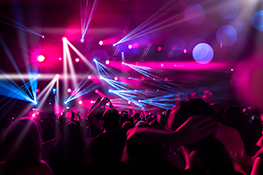Lighting a Stage: Essential Tips for Beginners
Whether you’re putting on a school play, a band concert, or a full-blown theatrical production, stage lighting is essential for creating the right atmosphere, highlighting performers, and captivating your audience. But with so many different types of lights and techniques, it can be overwhelming to know where to start.
This guide provides essential tips for beginners on how to light a stage effectively.
Understanding the Basics of Stage Lighting
Before you start plugging in lights, it’s important to understand the fundamental principles of stage lighting.
Key Lighting Concepts
- Intensity: The brightness of the light.
- Color: The hue of the light, which can be used to create mood and atmosphere.
- Direction: The angle at which the light hits the stage, which can create shadows and highlight features.
- Distribution: The spread of the light, which determines how evenly the stage is lit.
Common Types of Stage Lights
- Fresnel: A versatile spotlight with a soft, even beam.
- PAR Can: A powerful light with a wide beam, often used for washes.
- Ellipsoidal Reflector Spotlight (ERS): A highly focused light with adjustable beam size and shape.
- LED Par: Energy-efficient and long-lasting, LED pars come in a variety of colors and beam angles.
Essential Lighting Techniques
Now that you understand the basics, let’s explore some key lighting techniques to help you create a stunning stage.
Front Lighting
Front lighting illuminates the stage from directly in front of the performers, providing even and balanced illumination. It’s essential for visibility and clarity but can create a flat, uninteresting look.
Side Lighting
Side lighting comes from the sides of the stage, creating depth and dimension by highlighting contours and casting shadows. It can also be used to create dramatic effects.
Back Lighting
Back lighting illuminates the performers from behind, separating them from the background and creating a sense of depth. It can also be used to create silhouettes and other special effects.
Uplighting
Uplighting shines light upwards from the floor or below stage level, emphasizing the actors’ faces and creating a dramatic atmosphere.
Planning Your Lighting Design
A successful lighting design requires careful planning. Here’s a step-by-step guide:
1. Understand the Script/Production
Before you even think about lights, read the script or familiarize yourself with the production. What mood and atmosphere are you trying to create?
2. Create a Lighting Plot
A lighting plot is a diagram that shows the placement and type of each light fixture. This helps you visualize the lighting design and ensure all your equipment is positioned correctly.
3. Choose the Right Equipment
Select the right types of lights for your specific needs. Consider the size of the stage, the desired effect, and your budget.
4. Test Your Lighting
Once you’ve set up your lights, test them out with your performers. Adjust the intensity, color, and direction of each light until you achieve the desired effect.
Stage Lighting Tips for Beginners
Here are some practical tips to help you improve your stage lighting:
- Use a Variety of Light Sources: Combining different types of lights creates depth and interest.
- Pay Attention to Color: Color can dramatically change the mood and atmosphere of your production. Use warm colors to create a sense of intimacy, cool colors to create a sense of distance, and contrasting colors for dramatic effects.
- Use Shadows: Shadows can create intrigue, highlight specific features, and add depth to the stage.
- Avoid Overlighting: Too much light can make the stage look flat and washed out. Experiment with different lighting levels to find the right balance.
- Practice and Experiment: Stage lighting is an art form. Practice different techniques and experiment with different lighting setups to find what works best for your production.
Conclusion
Lighting a stage effectively can make a big difference in the overall impact of your production. By understanding the basics, practicing key techniques, and planning carefully, you can create stunning lighting designs that captivate your audience.
For all your stage lighting needs, contact Stagelights.in. We offer a wide range of lighting equipment and expert advice to help you light your stage with confidence.
Contact Us
Stagelights.in
Phone: 1800 200 6000, +91 90150 60000
Email: info@stagelights.in


 Auditorium Construction Services
Auditorium Construction Services 